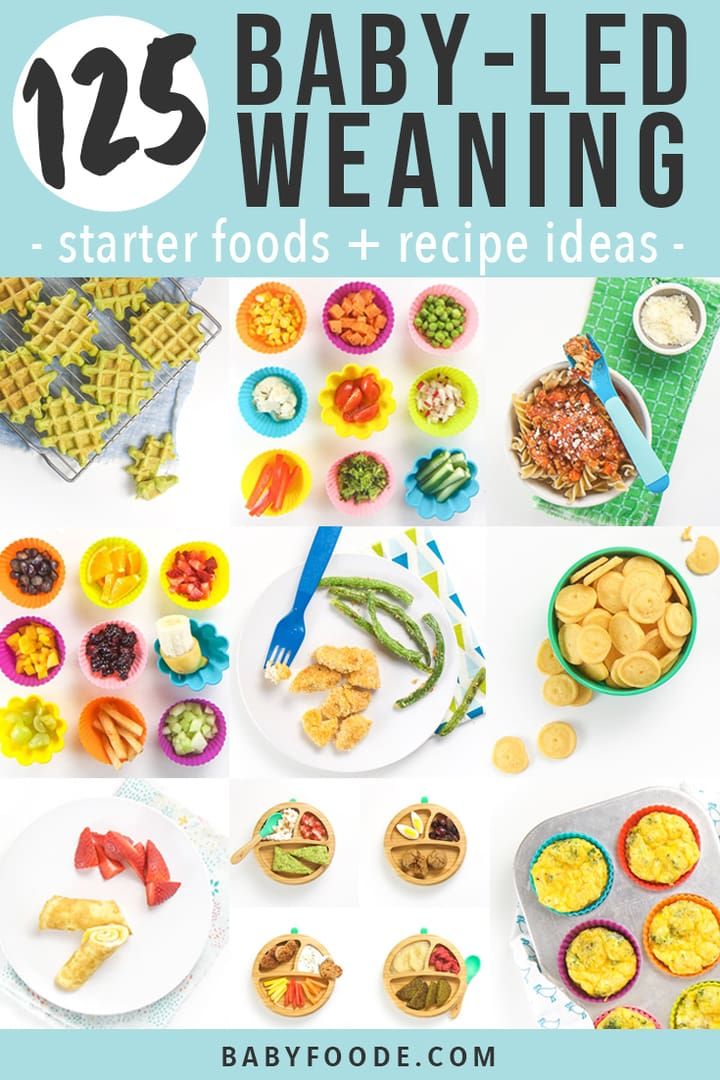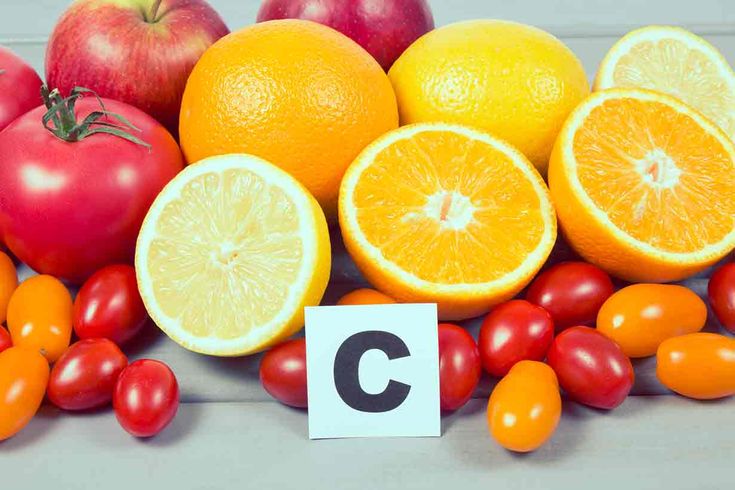When can baby eat gerber 1st foods
When Can Babies Eat Gerber?
Baby Milestones: Starting Gerber
It probably seems like you welcomed your little one to the world just yesterday, and now he’s ready to start solids. Any new food besides formula or breast milk is considered a solid. Exploring new foods is an exciting time for mom and baby as you help him check out all the new tastes and textures. Gerber makes some ideal starter foods for your little one. Keep a few things in mind as your little guy expands his palate.
Signs Your Baby Is Ready to Eat Gerber
How Long Should I Feed My Baby Gerber Cereal for Babies?
Learn More
Like any milestone, the age that little ones are ready to eat Gerber varies. The American Academy of Pediatrics recommends waiting until your baby is 6 months old to start solids, but some pediatricians say it’s OK to start between 4 and 6 months. Check with your pediatrician to see what age he thinks is best.
Experts consider more than just age when introducing new foods, though. Keep an eye out for some signs your little one is ready to dig in to some new tastes. Your baby should be able to hold her head up well and turn it smoothly from side to side. She should also seem interested in food. Does she seem eager to take a bite or grab your fork if you’re eating near her? If so, she’s probably ready to try her own food.
If you start solids too early, it's possible your little one will just push the food right back out. This is because babies are born with something called a “tongue thrust reflex.” When something unusual is placed on your baby's tongue, she automatically sticks her tongue out rather than back. This protects your little one from choking, but it also makes it unlikely she'll push any food back into her throat before she's ready. This reflex starts to go away between 4 and 6 months.
Before 4 months, your little one's tongue and swallowing mechanisms also may not be ready to work together. This means that while she may not push it right back out, she may just move food randomly around in her mouth.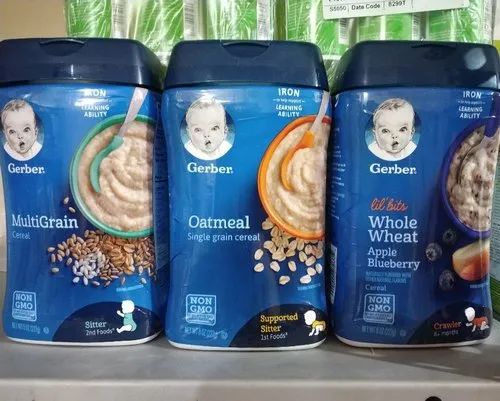
Good Starter Foods
No specific rules exist as to which food to introduce first, but many moms start with a single-grain cereal. These are good starter foods because most cereals are loaded with iron, which is good for your little one’s brain development, and they’re fairly easy for baby to digest.
Baby rice, barley or oatmeal are all popular cereals. Mix the cereal with breast milk or formula to a fairly thin consistency the first few times you offer some. As your little one gets used to the texture, you can thicken it by mixing in less liquid.
If you don’t offer cereal, introduce meat purees fairly early to ensure your baby is getting the necessary iron.
Choosing to start with a fruit or a vegetable is up to you. Starting with vegetables doesn’t guarantee your little guy will prefer them over sweeter fruits because babies have a natural preference for sweets. However, meats and vegetables have more nutrients than fruits or cereals.
It’s best to stick with pureed foods until your baby can sit up and bring his hands or other things to his mouth. At this point, you can offer small, soft finger foods such as small pieces of banana, thoroughly cooked pasta, scrambled eggs or chopped chicken.
At this point, you can offer small, soft finger foods such as small pieces of banana, thoroughly cooked pasta, scrambled eggs or chopped chicken.
Making Eating Fun
When Can Babies Eat Yogurt?
Learn More
Actually feeding your little one the solids is the fun, but messy part. Put her in a high chair and put a bib on her. Better yet, strip her down to her diaper as long as it’s not too cold. Have a camera nearby so you can capture these firsts.
Put a dab of food on your little one’s high chair tray so she can explore it while you work on feeding her. She might surprise you and stick her fingers in it and then try it herself.
Pick a time of day when neither you nor your little one is tired and you have plenty of time to enjoy the experience. You might try nursing her or giving her a bottle first, so she’s not starving in case she doesn’t take to solids right away.
Use a baby-sized spoon to give your little one a half-spoonful or less of food.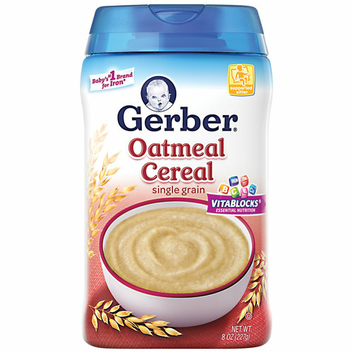 Don’t be surprised or upset if she makes funny faces or spits the food back out. It may take a few tries for her to get a feel for the texture. Talk to her while you’re feeding her to encourage her. Try some songs or zoom the airplane in to make the experience fun for her. If she cries or turns away, don’t push it. Try again in a week or so.
Don’t be surprised or upset if she makes funny faces or spits the food back out. It may take a few tries for her to get a feel for the texture. Talk to her while you’re feeding her to encourage her. Try some songs or zoom the airplane in to make the experience fun for her. If she cries or turns away, don’t push it. Try again in a week or so.
Allergy Considerations
As you introduce new foods, wait a few days to offer each one. This allows you to watch for any allergic reaction such as diarrhea, rash or vomiting. If you notice any of these reactions, stop giving the new food and talk to your pediatrician.
Once you’ve determined one food is safe, you can still offer that one even when introducing a new food.
Even highly allergenic foods, such as peanut butter, eggs, milk and fish, can be introduced to your baby early on as long as he hasn’t been diagnosed with any other food allergies, no siblings have an allergy, and he doesn’t have moderate-to-severe eczema.
The only things your baby should not have before age 1 are honey, which can cause botulism, and whole milk, which can be too difficult for your little one to digest.
When, What, and How to Introduce Solid Foods | Nutrition
For more information about how to know if your baby is ready to starting eating foods, what first foods to offer, and what to expect, watch these videos from 1,000 Days.
The Dietary Guidelines for Americans and the American Academy of Pediatrics recommend children be introduced to foods other than breast milk or infant formula when they are about 6 months old. Introducing foods before 4 months old is not recommended. Every child is different. How do you know if your child is ready for foods other than breast milk or infant formula? You can look for these signs that your child is developmentally ready.
Your child:
- Sits up alone or with support.
- Is able to control head and neck.
- Opens the mouth when food is offered.
- Swallows food rather than pushes it back out onto the chin.
- Brings objects to the mouth.
- Tries to grasp small objects, such as toys or food.

- Transfers food from the front to the back of the tongue to swallow.
What Foods Should I Introduce to My Child First?
The American Academy of Pediatrics says that for most children, you do not need to give foods in a certain order. Your child can begin eating solid foods at about 6 months old. By the time he or she is 7 or 8 months old, your child can eat a variety of foods from different food groups. These foods include infant cereals, meat or other proteins, fruits, vegetables, grains, yogurts and cheeses, and more.
If your child is eating infant cereals, it is important to offer a variety of fortifiedalert icon infant cereals such as oat, barley, and multi-grain instead of only rice cereal. Only providing infant rice cereal is not recommended by the Food and Drug Administration because there is a risk for children to be exposed to arsenic. Visit the U.S. Food & Drug Administrationexternal icon to learn more.
How Should I Introduce My Child to Foods?
Your child needs certain vitamins and minerals to grow healthy and strong.
Now that your child is starting to eat food, be sure to choose foods that give your child all the vitamins and minerals they need.
Click here to learn more about some of these vitamins & minerals.
Let your child try one single-ingredient food at a time at first. This helps you see if your child has any problems with that food, such as food allergies. Wait 3 to 5 days between each new food. Before you know it, your child will be on his or her way to eating and enjoying lots of new foods.
Introduce potentially allergenic foods when other foods are introduced.
Potentially allergenic foods include cow’s milk products, eggs, fish, shellfish, tree nuts, peanuts, wheat, soy, and sesame. Drinking cow’s milk or fortified soy beverages is not recommended until your child is older than 12 months, but other cow’s milk products, such as yogurt, can be introduced before 12 months. If your child has severe eczema and/or egg allergy, talk with your child’s doctor or nurse about when and how to safely introduce foods with peanuts.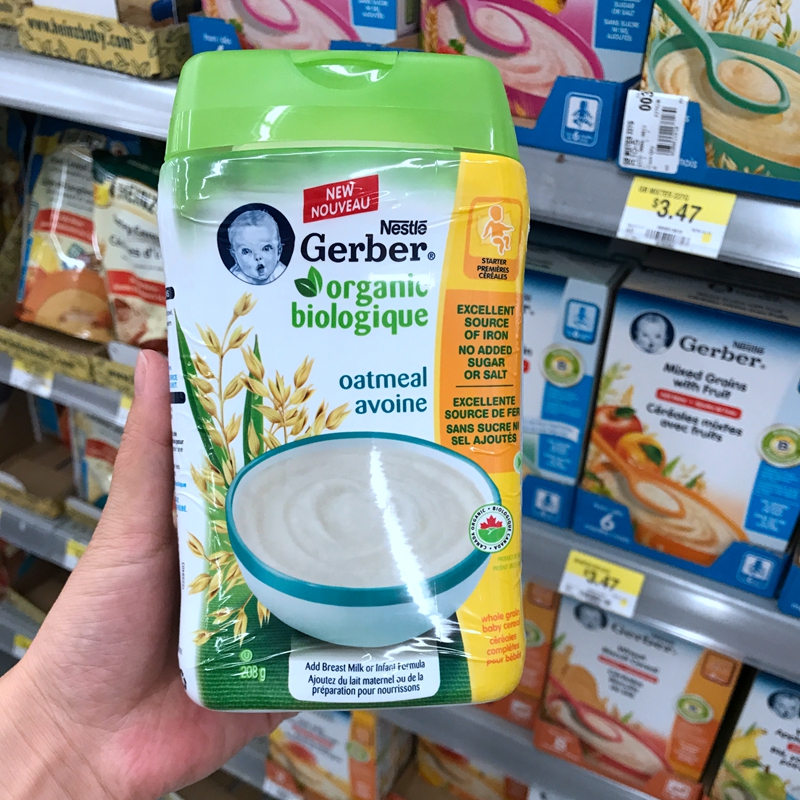
How Should I Prepare Food for My Child to Eat?
At first, it’s easier for your child to eat foods that are mashed, pureed, or strained and very smooth in texture. It can take time for your child to adjust to new food textures. Your child might cough, gag, or spit up. As your baby’s oral skills develop, thicker and lumpier foods can be introduced.
Some foods are potential choking hazards, so it is important to feed your child foods that are the right texture for his or her development. To help prevent choking, prepare foods that can be easily dissolved with saliva and do not require chewing. Feed small portions and encourage your baby to eat slowly. Always watch your child while he or she is eating.
Here are some tips for preparing foods:
- Mix cereals and mashed cooked grains with breast milk, formula, or water to make it smooth and easy for your baby to swallow.
- Mash or puree vegetables, fruits and other foods until they are smooth.

- Hard fruits and vegetables, like apples and carrots, usually need to be cooked so they can be easily mashed or pureed.
- Cook food until it is soft enough to easily mash with a fork.
- Remove all fat, skin, and bones from poultry, meat, and fish, before cooking.
- Remove seeds and hard pits from fruit, and then cut the fruit into small pieces.
- Cut soft food into small pieces or thin slices.
- Cut cylindrical foods like hot dogs, sausage and string cheese into short thin strips instead of round pieces that could get stuck in the airway.
- Cut small spherical foods like grapes, cherries, berries and tomatoes into small pieces.
- Cook and finely grind or mash whole-grain kernels of wheat, barley, rice, and other grains.
Learn more about potential choking hazards and how to prevent your child from choking.
Top of Page
Baby food Gerber | About the most beloved and beautiful
Every mother who cares about the health of her baby faces the problem of choosing baby food.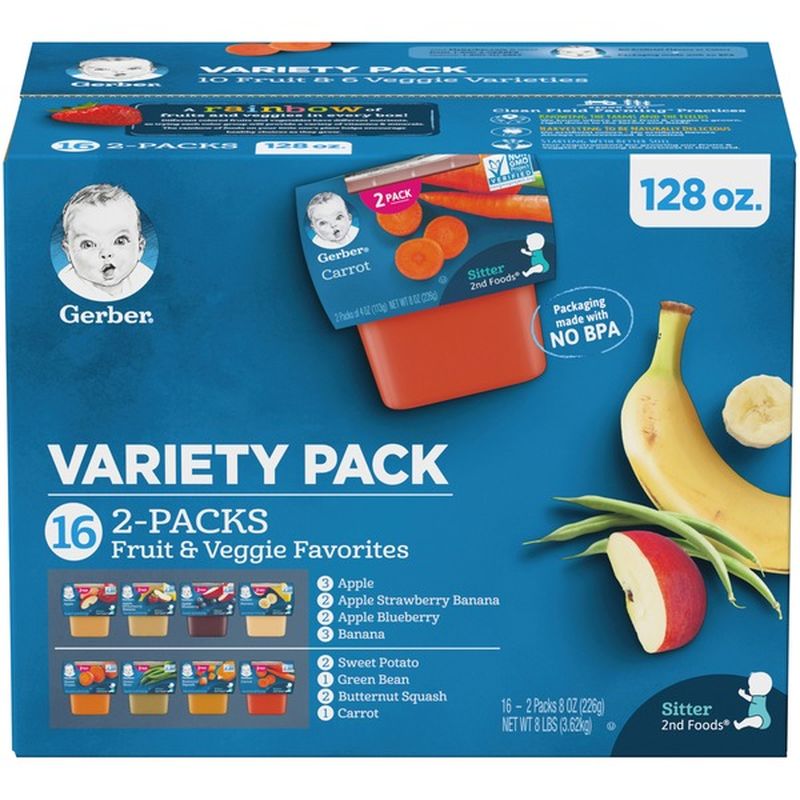 Which baby food is the most useful, what products it is made from, whether the baby will like it - these are questions that concern any mother. Much in the production of quality food for children depends on the integrity of the manufacturer. Therefore, when choosing baby food, you should trust more proven companies that have managed to establish themselves in the world market.
Which baby food is the most useful, what products it is made from, whether the baby will like it - these are questions that concern any mother. Much in the production of quality food for children depends on the integrity of the manufacturer. Therefore, when choosing baby food, you should trust more proven companies that have managed to establish themselves in the world market.
Gerber has been making baby food for over 80 years. The company's products are distinguished by a wide range, high quality raw materials, the use of the most advanced technologies for the production of tasty and healthy baby food. Gerber offers its customers fruit juices, fruit, fruit and cereal, meat, vegetable, meat and vegetable purees, fruit and milk desserts.
Gerber fruit and vegetable purees
From 4-5 months, pediatricians recommend introducing vegetables and fruits into the child's diet, which are important for the health and development of the child, because are a source of potassium, iron, organic acids and plant fibers.
Complementary foods are a big step in your baby's nutrition. It is very important to choose the right products at the very beginning, as the health of the child also depends on this in the future. There is a lot of opinion and disagreement about the timing of the introduction of complementary foods. There are supporters of complementary foods for babies from 4 months. Some mothers introduce complementary foods when the child is 1 year old.
Doctors recommend introducing complementary foods from 6 months. The first complementary foods are usually started with fruit juices, vegetable and fruit purees. It is at this stage that the baby begins to get acquainted with the variety of new tastes. Quality baby food accelerates the physical development of the baby. But how, among the variety of manufacturers and names of companies producing children's products, to choose, and not be mistaken, high-quality nutrition, rich in all the necessary trace elements and vitamins?
Quality baby food accelerates the physical development of the baby. But how, among the variety of manufacturers and names of companies producing children's products, to choose, and not be mistaken, high-quality nutrition, rich in all the necessary trace elements and vitamins?
Pediatricians recommend introducing complementary foods for children with low weight in the form of cereals, and for overweight children - vegetable and fruit purees. It is recommended to introduce complementary foods gradually, starting with small doses of 1-2 teaspoons. It is better to give complementary foods at the beginning of the day, so that during the day you can monitor the condition of the child, to exclude allergic reactions.
Gerber one-component vegetable purees from carrots, cauliflower, white potatoes, pumpkin, broccoli and fruit purees from prunes, apples, pears, peaches are ideal for the first feeding. A little later, the baby can be offered multi-component purees: Cauliflower and Potato, Apple and Pear, etc. Gerber vegetable and fruit purees are made from environmentally friendly ripe fruits and vegetables without starch or preservatives.
Gerber vegetable and fruit purees are made from environmentally friendly ripe fruits and vegetables without starch or preservatives.
Vegetable puree is recommended to start with one-component puree. It is better to start with cauliflower or broccoli. If the child refuses some types of puree, it can be recommended to add fruit pieces that the baby likes to the puree. But, if the child categorically refuses the dish, in no case should you force-feed him. It is better to take a break and offer new food when the child comes from a walk and is hungry enough.
Now baby food in the trading network is presented in a huge amount and assortment. Well, thank God, there are plenty to choose from! Let's take a look at some of the popular and best-selling food products that are produced by Gerber.
Fruits, vegetables and meat from which baby food is produced do not contain genetically modified products, dyes, preservatives, flavor and aroma enhancers, stabilizers. The company produces almost 70 types of baby food - fruit juice, fruit and vegetable purees, vegetable stews, fruit purees with cottage cheese. Gerber products are varied, tasty, natural, healthy nutrition for children.
The company produces almost 70 types of baby food - fruit juice, fruit and vegetable purees, vegetable stews, fruit purees with cottage cheese. Gerber products are varied, tasty, natural, healthy nutrition for children.
The company produces one-component and multi-component vegetable and fruit purees, which is very convenient to gradually introduce the baby to a variety of new foods. The advantages of Gerber baby food are the modern technological process of their preparation. All products of this company are not subjected to intensive heat treatment, and this allows the products not to change their natural color and taste. Gerber products are free of starch and thickeners. One-component vegetable purees are used for the first feeding: carrots, cauliflower, white potatoes, pumpkin, broccoli. Children like carrots, cauliflower, pumpkin very much.
Excellent one-component fruit purees: prunes, pear, apple, peach. Children especially like pear and apple. One-component purees of the first complementary foods can be given to babies from 4-6 months.
Lots of Gerber products for babies from 6 months. Puree from various vegetables with veal, rabbit and chicken is an ideal nutrition with the content of essential fatty acids Omega 3 and Omega 6, which contribute to the development of the brain, strengthen the child's vision and immunity. This is very important, since these acids can only enter the human body with certain foods.
From the age of 6 months, children can be offered fruit purees with cottage cheese, such as apricot, banana, strawberry, peach. The benefits of cottage cheese in baby food are great. This fermented milk product is rich in calcium, potassium, sodium, phosphorus, vitamin B12, B2. Cottage cheese contains a large amount of protein needed by a growing body.
Gerber products are also very convenient because the older the child, the more varied the food, and the volume of jars is increased according to age. Gerber juices also deserve special mention. We will not describe how useful juice is for a child's health, how many vitamins, organic acids and minerals it contains. It is very convenient that Gerber juices are also divided into single-component and multi-component. This allows you to enter them from 4 months. One-component apple and pear juices are low allergenic. Therefore, it is recommended to start complementary foods with them. As the child grows, multi-component juices such as apple and carrot can be introduced; apple, grapes and wild rose; apple, grape and mint, etc. The value of Gerber juices lies in the fact that they are all made without preservatives and sugar. Due to their natural taste and nutritional value, many mothers have approved Gerber juices and give them to their children. Gerber means healthy, strong children and calm mothers! Gerber is a reliable assistant for moms!
It is very convenient that Gerber juices are also divided into single-component and multi-component. This allows you to enter them from 4 months. One-component apple and pear juices are low allergenic. Therefore, it is recommended to start complementary foods with them. As the child grows, multi-component juices such as apple and carrot can be introduced; apple, grapes and wild rose; apple, grape and mint, etc. The value of Gerber juices lies in the fact that they are all made without preservatives and sugar. Due to their natural taste and nutritional value, many mothers have approved Gerber juices and give them to their children. Gerber means healthy, strong children and calm mothers! Gerber is a reliable assistant for moms!
Gerber fruit juices
Juice should not be introduced into the baby's diet before 4-5 months of age. You should start with single-component juices. Gerber produces apple juice (clarified or with pulp) and pear juice. Gerber juices made from two or more fruits: "Apple-Carrot", "Apple-Pear", "Apple-Peach", "Apple-Cherry" are perfect for children from 5 months.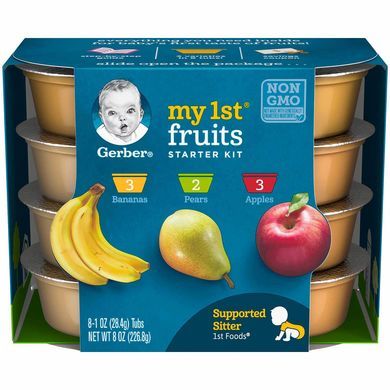
Gerber puree assortment
Gerber puree with cottage cheese.
An important baby food is cottage cheese, which contains a lot of protein and calcium salts. It is also rich in iron, vitamins B1 and PP. Gerber puree from apricot with cottage cheese, banana with cottage cheese, peach with cottage cheese and strawberry with cottage cheese is not only healthy, but also very tasty.
Gerber puree with cream.
The cream contains a large amount of easily digestible milk fat, as well as fat-soluble vitamins. Pear puree with cream, peach with cream, banana with cream, strawberries with cream, apricot with cream will please the baby.
However, it should be remembered that children with cow's milk intolerance should only be introduced to dairy products after consulting a pediatrician.
Gerber meat purees.
Meat puree is an essential food product for babies from 6 months. Meat contains vitamins, iron, protein and other nutrients that play an important role in the development and growth of the child.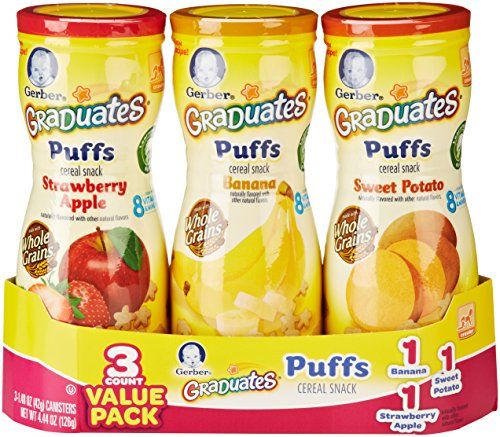 Gerber baby food are meat purees made from all types of meat suitable for a child: chicken, turkey, beef, veal, pork, lamb and rabbit. In addition to meat purees, Gerber baby food includes various types of vegetable puree with meat: vegetable puree with rabbit, veal stew with pumpkin and carrots, turkey stew with rice, etc.
Gerber baby food are meat purees made from all types of meat suitable for a child: chicken, turkey, beef, veal, pork, lamb and rabbit. In addition to meat purees, Gerber baby food includes various types of vegetable puree with meat: vegetable puree with rabbit, veal stew with pumpkin and carrots, turkey stew with rice, etc.
Taking into account all the possible taste preferences of its little consumers, Gerber is constantly expanding the range of products offered. Gerber DoReMi products are fresh fruit smoothies, fruit and cereal bars, cookies.
Gerber has achieved the most important thing - the baby food it produces has earned the trust of buyers in many countries of the world due to the observance of the main principle for every mother - tasty and healthy.
Record tags: baby food, baby health, baby food, palm oil
Complementary foods at 4 months | Useful tips from the Tyoma brand
It is well known that the ideal time to introduce complementary foods is between 4 and 6 months of age. The presence of a child's teeth or the ability to sit are not signs of a child's readiness for complementary foods. It is important that the baby does not have a reflex of pushing the spoon with his tongue, and he can swallow food thicker than breast milk or formula well.
The presence of a child's teeth or the ability to sit are not signs of a child's readiness for complementary foods. It is important that the baby does not have a reflex of pushing the spoon with his tongue, and he can swallow food thicker than breast milk or formula well.
The pediatrician will help determine the exact start date for complementary foods, and in most cases this is the golden mean of 5-5.5 months. But there are situations when complementary foods need to be started from 4 months, including even a child who is exclusively breastfed.
In what cases are complementary foods introduced from 4 months?
- The child is not gaining weight well or is lagging behind in physical development.
- The child has functional digestive disorders (regurgitation, constipation).
- The mother has little breast milk or it is poorly absorbed.
- The child has a reduced appetite or is not digesting formula well.

- The child has signs of iron deficiency (anemia).
- The child has a pronounced food interest: he watches with interest the food of adults, reaches for food.
- The child stopped eating formula and began to demand food more often.
How to start complementary foods at 4 months?
The first product of complementary foods, regardless of the age and type of feeding of the baby (breast or artificial), should be energy-intensive foods: either porridge or vegetable puree. Porridge can be chosen first if the child has loose or unstable stools, and also if the child is underweight. After 4-5 days from the beginning of the introduction of porridge, butter can be gradually added to it (up to 5 g per serving of porridge in 150 g)
Mashed vegetables can be the first meal of the day if a child is prone to constipation, when it is better to choose zucchini, which can have a mild laxative effect on the child's stool.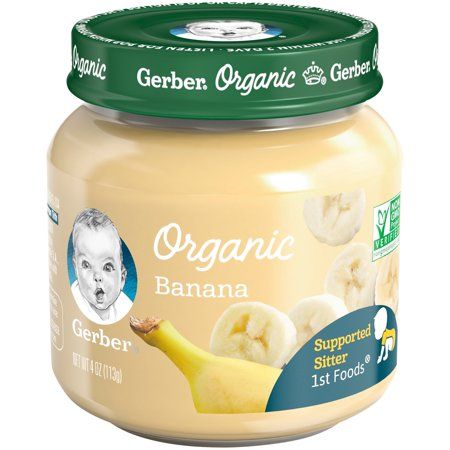 Starting from the 4-5th day of the introduction of vegetable puree, vegetable oil can be gradually added to it (up to 5 g per serving of vegetables in 150 g).
Starting from the 4-5th day of the introduction of vegetable puree, vegetable oil can be gradually added to it (up to 5 g per serving of vegetables in 150 g).
What foods can be introduced into the diet of a child at 4 months?
Kashi
Of the first cereals, it is better to give preference to buckwheat or rice. They must be dairy-free and can be diluted with water or breast milk, or the mixture that the baby eats. Later, you can introduce corn and oatmeal.
Vegetables
The first vegetable puree can be zucchini, broccoli, or cauliflower.
Fruit
The third type of complementary food can be fruit puree from apples or pears. Later, you can introduce mashed banana or apricot. At first, fruit puree can not be given to the child separately, but it is better to mix it with cereal or vegetables so that the child does not begin to prefer the sweet taste of fruits. When the amount of fruit puree reaches 50 g or more, it can also be given separately, for example, after the child has eaten porridge or for an afternoon snack.
Juices
Juices should not be the first feeding, in addition, they can not be introduced into the baby's first year of life at all, given their sweet taste and low nutritional value.
Can you make your own first meal?
You can prepare the first complementary foods yourself, but it is safer to use hypoallergenic monocomponent cereals or commercially produced purees prepared to high quality standards for baby food. In addition, it is important to consider that industrially produced baby cereals are often fortified with vitamins and minerals, which makes them especially useful for the first feeding.
How to start the introduction of a new product?
Complementary foods are introduced before breastfeeding or formula. The introduction of a new product should be gradual. But how is it?
- On day 1, give your baby 1 tsp. complementary foods before breastfeeding or formula
- On day 2 - 3 tsp.
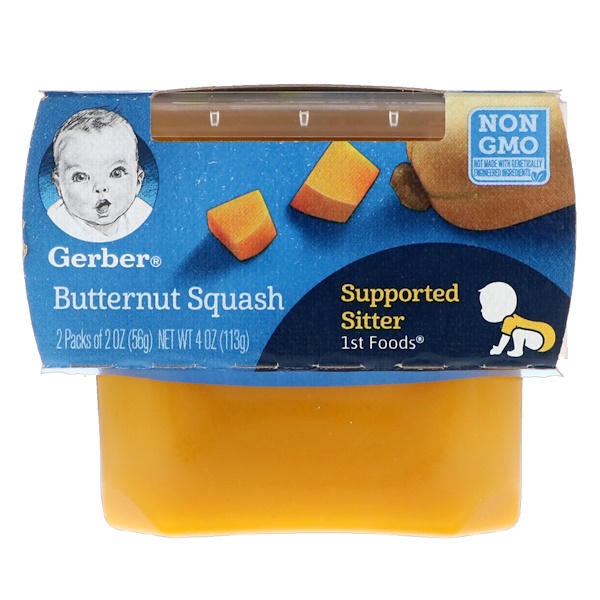 (15 g)
(15 g) - On day 3 - 6 tsp. (30 g)
- Day 4 - 50 g
- Day 5 - 70 g
- Day 7 - 100 g
- For 8-10 days - bring to 150 g.
Please note that if complementary foods are introduced from 4 months, then the introduction of 1 new product may take longer than the introduction of complementary foods from 5 or 6 months, namely up to 10 days or more, depending on the reaction of the baby.
Important!
If on the 8-10th day of the introduction of a new product, the baby still cannot eat 100-150 ml of porridge or puree at once, then this amount can be divided into 2 or even 3 doses, for example, give 50 ml of porridge in the morning, 50 ml in the afternoon and 50 ml in the evening. Why do this? So that the child gradually gets used not only to the new product, but also to its quantity. In the future, you need to try to gradually increase the one-time amount of the product to the age volume.







